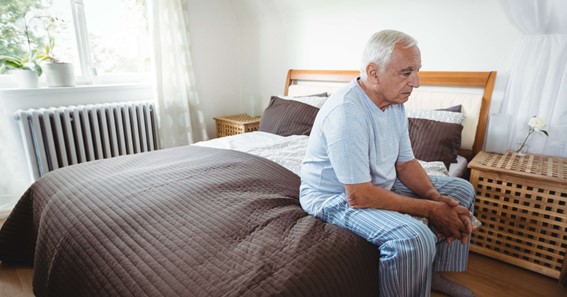Are you curious to know what is involuntary seclusion? You have come to the right place as I am going to tell you everything about involuntary seclusion in a very simple explanation. Without further discussion let’s begin to know what is involuntary seclusion?
Involuntary seclusion refers to the act of isolating or confining an individual against their will, typically in a healthcare or residential setting. This practice, although sometimes necessary for safety reasons, can have significant negative effects on a person’s mental, emotional, and physical well-being. In this blog post, we will delve into the concept of involuntary seclusion, explore its implications, and discuss alternative approaches that prioritize individual autonomy and dignity.
What Is Involuntary Seclusion?
Involuntary seclusion occurs when a person is intentionally isolated or confined without their consent or against their will. It can happen in various settings, including nursing homes, psychiatric institutions, correctional facilities, and hospitals. While there may be instances where seclusion is employed for safety or security reasons, such as during emergencies or in response to violent behavior, it is essential to recognize the potential harm and ethical concerns associated with this practice.
Implications Of Involuntary Seclusion
- Psychological Impact: Involuntary seclusion can have detrimental effects on a person’s mental health. Feelings of loneliness, helplessness, and abandonment can lead to increased anxiety, depression, and emotional distress.
- Deterioration Of Social Skills: Isolation from social interaction and community engagement can hinder the development and maintenance of social skills. Individuals subjected to involuntary seclusion may experience difficulties in forming relationships and reintegration into society.
- Physical Health Consequences: Lack of physical activity and restricted access to necessary medical care can contribute to physical health decline. Reduced mobility, muscle weakness, and increased risk of medical complications are common consequences.
- Loss Of Autonomy And Dignity: Involuntary seclusion infringes upon an individual’s autonomy and dignity, stripping away their freedom of movement and decision-making. It can lead to feelings of powerlessness and a loss of control over one’s own life.
Seeking Alternative Approaches
- Person-Centered Care: Embracing a person-centered approach involves recognizing each individual’s unique needs, preferences, and desires. Creating care plans that prioritize individual autonomy and well-being can help minimize the need for involuntary seclusion.
- Improved Staff Training: Educating healthcare professionals, caregivers, and staff members on alternative strategies for managing challenging behaviors is crucial. This can include de-escalation techniques, communication skills, and implementing non-restrictive interventions.
- Creating Supportive Environments: Designing care environments that promote engagement, social interaction, and sensory stimulation can contribute to a sense of community and reduce the likelihood of isolation.
- Implementing Restraint Reduction Programs: Actively working to minimize the use of restraints and seclusion through the implementation of evidence-based restraint reduction programs can help ensure the safety and well-being of individuals while respecting their rights.
- Legislative And Regulatory Changes: Advocating for policy changes that limit and regulate the use of involuntary seclusion can help protect vulnerable populations. Encouraging transparency, accountability, and oversight in healthcare and residential settings is essential.
Conclusion
Involuntary seclusion, although sometimes employed for safety reasons, has significant negative implications for individuals’ mental, emotional, and physical well-being. Recognizing the potential harm and ethical concerns associated with this practice is crucial in fostering a culture of person-centered care and respect for individual rights and autonomy. By seeking alternative approaches that prioritize engagement, dignity, and meaningful social interactions, we can create supportive environments that promote the well-being and quality of life of all individuals. It is through these efforts that we can work towards a more compassionate and inclusive society.
Visit Ofstype to Get to know about more concepts like this.
FAQ
Is Involuntary Seclusion A Type Of Neglect?
Involuntary seclusion is much closer to neglect, although in cases of extreme seclusion, authorities usually perform a thorough investigation to rule out the possibility of abuse by the caretaker or nursing facility.
What Is Involuntary Seclusion Cms?
Residents have the right to be free from involuntary seclusion, which is when a resident is separated from other residents, from his or her room, or confined to his or her room or in another area against the resident or resident representative’s will.
Is Seclusion Voluntary Or Involuntary?
Seclusion is also known as a type of environmental restraint that is used to prevent free movement of the patient and decrease environmental stimulation. It can be used involuntarily or voluntarily, depending on the indication.
What Is The First Step In Preventing Elder Abuse?
The First Step to Preventing Elder Abuse Is Recognizing It
The physical, emotional, psychological, financial, and medical abuse of elders is a sad reality that causes pain and trauma for millions of older Americans. Elder abuse is sometimes hard for caregivers to spot, and the majority of cases are not reported.
I Have Covered All The Following Queries And Topics In The Above Article
Involuntary Seclusion Nursing Home
Involuntary Seclusion In A Sentence
Seclusion Meaning
What Is The First Step In Preventing Elder Abuse
What Is The Law That Regulates Nursing Homes
What Is Involuntary Seclusion
What is the definition of involuntary seclusion
What is involuntary seclusion?
